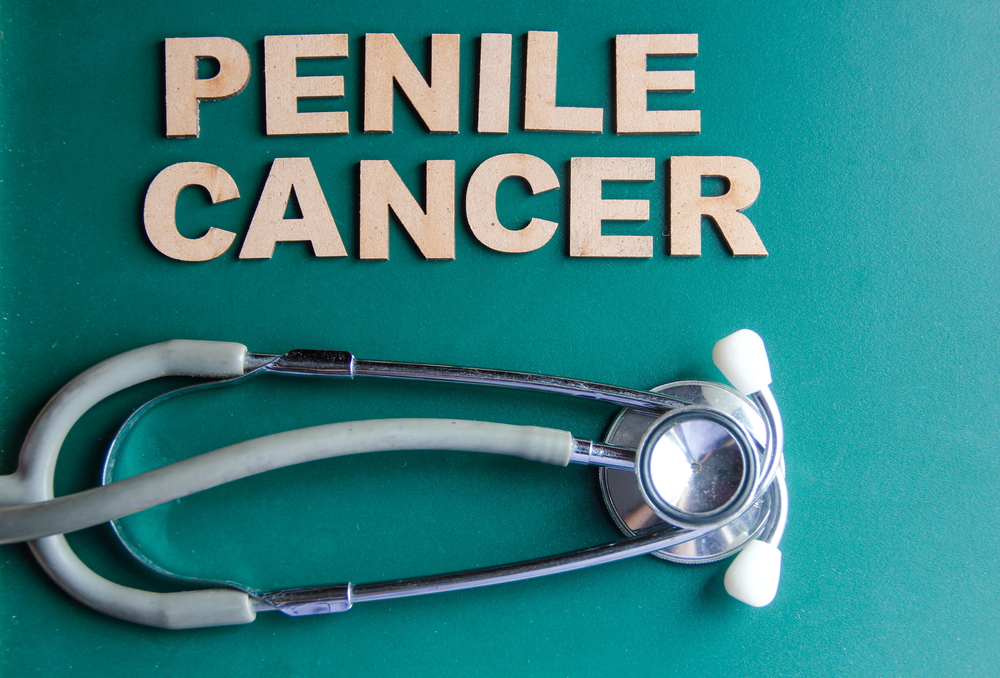The cancer of the penis, also known as penile cancer, refers to a rare medical condition that negatively impacts the tissues and skin that are found in the penis.
This condition occurs when the penis’ hale and hearty cells develop cancer and start growing uncontrollably until it forms a tumor. Cancer could end up spreading to other parts in your body, which includes other organs, lymph nodes, and glands.
A lot of studies taken have estimated that there are about 2300 men that suffer from penile cancer every year in the US.
Symptoms of penile cancer
The following signs and symptoms don’t always point out that a man has penile cancer, but if you notice any of them, visit your doctor for a checkup.
These are the symptoms of this condition;
Skin changes
The first warning sign of this cancer is the changing of the skin around the penis. This change most likely occurs on the tip of the penis. If the man is uncircumcised, then the change can occur on the foreskin.
In some cases, it could occur on the shaft. These changes include;
- Thickening of an area of the skin
- Variations in the skin color
- A lump
- A sore that could bleed
- Small bumps
- A foul-smelling discharge or bleeding under the foreskin
- A reddish rash under the foreskin
Sore or lumps that form as a result of penile cancer might hurt, but they don’t usually hurt. If you begin to notice any new growth or abnormality on your penis, ensure you visit your healthcare provider as soon as possible.
Any change that doesn’t improve or gets worse after four weeks should be evaluated by a doctor.
Swelling
Another symptom of penile cancer includes inflammation at the end of the penis, particularly when the foreskin is constricted. You might also find it challenging to reposition the foreskin.
Lumps under the skin in the groin
 If the cancer is left to spread, it moves from the penis and first travels to the groin and attacks the lymph nodes. This could cause the lymph nodes to get swollen.
If the cancer is left to spread, it moves from the penis and first travels to the groin and attacks the lymph nodes. This could cause the lymph nodes to get swollen.
Lymph nodes are a collection of immune system cells; they are usually very small and can hardly be felt. When the lymph nodes get swollen, it may feel like smooth lumps under the skin.
However, the swelling of lymph nodes doesn’t always indicate that the cancer has spread there. Lymph nodes most likely swell in response to an infection.
The skin around a penile cancer could get infected, which would result in the swelling of the nearby lymph nodes, even if the cancer has not spread to that point.
Penile cancer risk factors
There are a number of facts that could increase your chances of suffering from penile cancer. However, it is not certain that you would get the cancer if one or more of the risk factors are present.
These are the factors that could make you more likely to have penile cancer;
Being infected with HPV
HPV, which is human papillomavirus, is a sexually transmitted disease that could increase your chances of suffering from penile cancer.
There are various types of HPV, and some could lead to genital warts, while others make you more susceptible to developing certain cancers, which includes penile cancer.
Smoking
Research has shown that men who smoke regularly are at a greater risk of getting penile cancer than men who don’t. If you have HPV and still smoke, then your chances of getting penile cancer are increased further.
Research suggests that the cancer-causing chemicals that are present in cigarettes could affect the DNA of the cells in the penis, which would result in penile cancer.
Phimosis
A man that has phimosis is faced with the inability to retract the foreskin on his penis. This condition can also lead to the buildup of smegma.
This is an oily, cheese-like secretion beneath the foreskin and around the glans. If you have phimosis, you might be unable to adequately clean your penis, which would increase your risk of having penile cancer.
Ultraviolet light therapy for psoriasis
Another factor that has been found to increase the risk for penile cancer is being treated with drugs called psoralens in addition to ultraviolet light therapy.
Since this treatment could increase the risk of penile cancer, it is recommended that men cover their genitals during treatment.
AIDS
Men who have been diagnosed with AID are at a greater risk of having penile cancer. However, this may be due to your lowered immune response, but certain lifestyle factors also play a role.
Not being circumcised
Circumcision involves the removal of part or all of the foreskin of the penis. While this process is usually done at birth, it could also be carried out at any stage in life.
Research has shown that this process helps to reduce the risk of having penile cancer by improving hygiene. Studies have shown that men who are uncircumcised are more likely to have penile cancer than men who are circumcised.
How penile cancer is diagnosed
To diagnose you with penile cancer, your doctor would perform an examination in person and run some analytic tests. While carrying out the exam, your healthcare provider will thoroughly check the penis and examine the sores, lumps, or masses.
If there is a suspected cancer, your healthcare provider will carry out a biopsy. This is a process where a tiny portion of tissue or skin is removed from your penis. Then, they will carefully examine the sample to check whether there are cancer cells.
When the results of the biopsy show that there are cancerous cells, your healthcare provide would carry out a cystoscopy to check the spread of the cancer.
This is a process where you use an instrument known as a cystoscope. This is a thin tube that has light and a small camera at its end.
When carrying out the cystoscopy, your healthcare provider will gradually put the cystoscope via your bladder in the opening of the penis.
This would ensure that your doctor gets the view of various parts of your penis. This process makes it easier to determine the spread of the cancer.
Sometimes, a magnetic resonace imaging of your penis is conducted to ensure that the cancer hasn’t spread to the penis’ inner tissues.
Stages of penile cancer
Each stage of penile cancer shows the intensity of the spread of the cancer. The analytic tests would help your doctor determine the stage of this condition. It will also help to pick out a suitable treatment strategy.
The following are the different stages of penile cancer;
Stage 0
In this stage, cancer is just skin’s upper layer. It has not spread to any gland, lymph node, or other parts of the body.
Stage 1
In this stage, cancer has spread to the connective tissue directly below the skin. It has not spread to any other part, which includes the glands and lymph nodes.
Stage 2
In this stage, cancer has spread to the connective tissue directly below the skin and also to the lymph vessels or blood vessels. Cancer has also spread to the erectile tissues or the urethra. It has not spread to any other part of the body.
Stage 3A
 In this stage, cancer has spread to the connective tissue directly below the skin and also to the lymph vessels or blood vessels. Cancer has also spread to the erectile tissues or the urethra.
In this stage, cancer has spread to the connective tissue directly below the skin and also to the lymph vessels or blood vessels. Cancer has also spread to the erectile tissues or the urethra.
Cancer has spread to about two lymph nodes in the groin. It has not spread to any other part of the body.
Stage 3B
In this stage, cancer has spread to the connective tissue directly below the skin and also to the lymph vessels or blood vessels. Cancer has also spread to the erectile tissues or the urethra.
Cancer has spread to various lymph nodes in the groin. It has not spread to other parts of the body.
Stage 4
In this stage, cancer has made its way to surrounding areas, including the prostate, scrotum, and pubic bone. It has moved to other organs and parts in the body.
Treatment for penile cancer
Penile cancer can come in two major ways, and they include noninvasive and invasive. Noninvasive penile cancer happens when cancer has not reached lymph nodes, glands, and deeper tissues.
The main treatment options for this condition include;
Circumcision
This involves the removal of the penis’ foreskin.
Laser therapy
This involves the use of concentrated light beams to destroy cancer cells and tumors
Cryosurgery
This involves the use of liquid nitrogen to freeze and remove tumors.
Chemotherapy
This is a chemically administered drug treatment that forcefully aids in the elimination of cancer.
Invasive penile cancer happens when cancer has deeply spread and affects the nearby glands and lymph nodes and penis tissue. A major treatment option for this condition often involves surgery.
The procedure may lead to the amputation of the lymph nodes found inside the pelvis and groin, entire penis, or the tumor.
The following are the surgery options;
- Excisional surgery
- Moh’s surgery
- Partial penectomy








COMMENTS